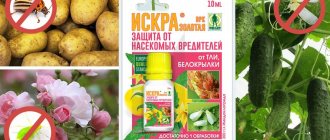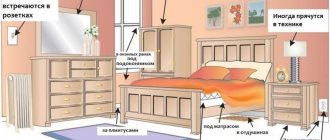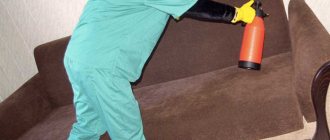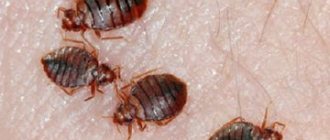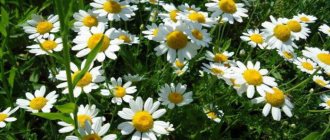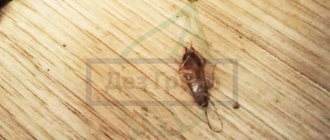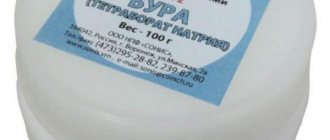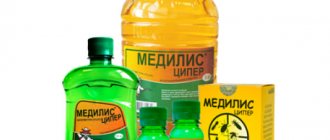Content
- Purpose and application
- Composition and dosage form
- Mechanism of action of "Kleschevit, CE"
- Regulations for the use of "Kleschevit, CE"
- Compatibility
- Analogs of “Kleschevit, CE” and preparations containing aversectin C
- Restrictions and security
- Application benefits
- Recommendations
"Kleschevit, KE" is an insectoacaricide of contact-intestinal action for the protection of vegetable and fruit crops in open and protected ground. The material includes the purpose, composition, formulation, mechanism of action, regulations for use, restrictions, compatibility, analogues, etc.
Instructions for use
Kleschevit super 100 ml instructions for use are slightly different. The group of objects being processed includes personal plots, lawns, and low shrubs.
For taiga and forest ticks, dilute 5 ml per one or two liters of water. Treatment takes place from the moment the snow melts until autumn. The event is held 2-3 days before people arrive. The validity period thanks to the main component is one and a half months. Repeated spraying can be carried out after 14 days.
For all other types of arachnids, 12 ml per 1-2 liters of water is used; August’s consumption is 2 liters per 100 m2.
From the moment the snow melts until autumn, plants are processed
Purpose and application
First of all, the drug “Kleschevit, EC” is developed and used for protection against herbivorous mites (spider mites, bud mites, fruit mites, felt mites, etc.), as well as aphids, whiteflies, lepidopteran caterpillars, and sawfly larvae.
Spider mite
The action of the drugs is aimed at protecting:
- vegetable crops in protected soil (cucumber, tomato, eggplant, etc.);
- pome crops (apple, quince, pear, etc.);
- indoor and greenhouse flowers;
- berry bushes (currants, gooseberries);
- conifers and ornamental plants, etc.
special instructions
While working with Kleschevit preparations, it is forbidden to eat, drink or smoke. Immediately after spraying crops, wash your hands with soap and wash. When an insecticidal agent gets on the skin, an allergic reaction occurs, and intoxication of varying degrees of severity occurs in the respiratory tract.
It is forbidden to work with toxic substances for pregnant women, lactating women, people prone to allergies, respiratory diseases, or breathing difficulties.
If, during the process of spraying plants against ticks, dizziness, nausea, weakness, or headache occur, work should be stopped. Rinse your mouth with a soda solution, take activated carbon at the rate of 1 tablet per kilogram of weight. If the condition does not return to normal, you need to seek help from specialists.
On a note!
Kleschevit super is used to treat areas against ixodid ticks. Destroys adults, nymphs, larvae of different ages. Protection after one spraying lasts 20 days. Disinsection is carried out wearing gloves, a respirator, and a protective suit.
Mechanism of action of "Kleschevit, CE"
The drug "Kleschevit, EC" is an insectoacaricide. The action of aversectin is intestinal and contact. The active substance penetrates the body of the pest insect through the outer integument when sprayed and/or after eating sprayed leaves, affects neural connections, causing paralysis and then death.
The period of protective action is 1-3 weeks.
Speed of initial impact - pest feeding stops after 6-8 hours in protected ground and after 8-10 hours in open ground.
Compatibility of Kleschevit with other drugs
The drug Kleschevit is compatible with the following chemicals:
- Fufanon;
- Actellicom;
- Talstar.
When using these drugs together, it is recommended to reduce the dose of the drugs by 2 times.
Kleschevit can be used alternately with various biological preparations - the interval between treatments with different agents should be at least a week.
Important!
It is forbidden to use Kleschevit simultaneously with Vermitec.
Fungicides:
Fungicide Discor Fungicide Profit Gold Preparation Mancozeb
Regulations for the use of "Kleschevit, CE"
The working fluid is prepared directly from the sprayer container. The required amount of the drug (see table) is diluted in water, then with constant stirring the volume of water is brought to the required level. The working solution is used on the day of preparation. The drug is applied to the plant by spraying; for this, any garden sprayer is used, preferably with a fine spray.
Treatments are carried out during the growing season as pests appear; if necessary, preventive treatments are allowed.
Consumption rate of the drug:
- up to 10 l./100 m2;
- up to 1 l. working solution for an adult berry bush;
- up to 5 l./tree depending on the size of the crown.
| Culture | Harmful object | Dosage | Number of treatments |
| Cucumbers, peppers, tomatoes, eggplants (protected soil) | Spider mites, thrips, aphids | 10 ml/1 l water | 3 |
| Currants, gooseberries | Ticks, moths, leaf rollers | 2 ml/1 l water | 2 |
| Apple, pear, quince | Ticks, leaf rollers, moths, codling moth, cutworms | 1.5 ml/1 l water | 2 |
| Houseplants, flower and ornamental crops (open/protected ground) | Spider mites, aphids, thrips | 2 ml/1 l water | 3-4 |
Composition and principle of operation of the drug Kleschevit
Under one brand name “Kleschevit”, three different drugs are presented on the market, differing in purpose, active ingredients, and methods of application.
- Kleschevit Super Spray is a product created for household use that protects people from fleas and ixodid ticks. A solution of the active alphacypermethrin is sprayed onto clothing as a protective agent. Available for sale in 100 ml aerosol bottles.
- Kleschevit Super is a product designed to disinfect summer cottages from ixodid ticks. The active ingredient is highly concentrated cypermethrin. Emulsion concentrate is supplied in 100 ml bottles.
- Kleschevit is a biological insectoacaricide, the composition is based on the drug aversectin C, produced by the bacteria Streptomyces avermitilis. Designed to protect fruit and berry trees and shrubs, vegetable crops, garden ornamental and indoor plants from piercing, sucking and gnawing insect pests. Available in the form of an emulsion concentrate of 4 and 10 ml.
Both acaricides, Kleschevit Bio and Kleschevit Super, are nerve-paralytic poisons of contact-intestinal action. The impact begins after the substance enters the arthropod’s body. The poison, inhibiting the nervous system of the tick, causes paralysis.
Tick medicine - Kleschevit
Aversectin C begins to act within a few hours, complete destruction of pests occurs in 3-6 days. Aversectin C does not accumulate in plants or in the external environment. The product is not detected in fruits and leaves after three days; in the soil it disintegrates after 30 hours.
The action of cypermethrin is also quite fast, however, the half-life in the soil, depending on its type, occurs up to 12 months. At normal humidity, under the influence of sunlight on the grass, the substance decomposes within 2-3 weeks. Therefore, it is not recommended to treat plantings of cultivated plants with Kleschevit Super.
Restrictions and security
a) Hazard class for warm-blooded organisms – class 3 (low-hazard). When working with a pesticide, you should follow generally known personal safety standards and use PPE. When working with the drug, you should be guided by the standards OST 6-15-90.4-90 and SanPiN 1.2.2584-10. The deadline for manual work is 1 day.
b) Hazard class for bees – class 3 (low danger). The developer sets a border protection zone for bees of 4-5 km, for aerial processing - 5-6 km, and the flight limit for bees should be 1-2 days. It is recommended to carry out ground treatment of plants in the morning or evening hours at a wind speed of 2-3 m/s, for aerial treatments 0-1 m/s.
c) The use of the insectoacaricide “Kleschevit, KE” in the water protection zone is prohibited.
d) Toxicological characteristics. The waiting period before harvesting is 3 days (the active substance is not fixed in the leaves after 2-3 days, and in the fruits after 3 days). When applied to the soil, the substance does not enter the roots of plants.
Toxicity
Kleshchevit has a hazard class 3 (moderately dangerous substance), hazard class 2-3 for bees (class 2 in an increased dosage of dilution against aphids). Tick beetle is not phytotoxic.
Security measures
Handle using gloves. While working, you must not smoke, drink, or eat. After work, wash your face and hands with soap and rinse your mouth. Store the drug in a cool, dry room at a temperature from -20C to +30C, separate from food and medicine, out of the reach of children and pets! There is no antidote; treatment for ingestion is symptomatic.
Advantages
- Higher concentration – lower consumption rate. Economically beneficial;
- Does not penetrate through plant membranes into the plant - does not accumulate in plants and fruits;
- Can be used at any phase of plant development, including during fruiting. Harmless to human health;
- At high temperatures, the effectiveness of the drug increases, while that of most chemical drugs decreases;
- Short waiting period – 2 days;
- Wide spectrum of action (spider mites, aphids, thrips, lepidopteran caterpillars, Colorado potato beetle, root-knot nematodes, etc.). Higher concentration - lower consumption rate. Economically beneficial;
- Does not penetrate through plant membranes into the plant - does not accumulate in plants and fruits; m
- Can be used at any phase of plant development, including during fruiting. Harmless to human health;
- At high temperatures, the effectiveness of the drug increases, while that of most chemical drugs decreases;
- Short waiting period – 2 days;
- Wide spectrum of action (spider mites, aphids, thrips, lepidopteran caterpillars, Colorado potato beetle, root-knot nematodes, etc.).
Recommendations
- The occurrence of resistance is unlikely, but it is recommended to alternate with insecticides and acaricides from other chemical groups.
- It should be borne in mind that the effect of the drug largely depends on the air temperature. When it decreased from 24 to 17°C, the toxicity for the common spider mite decreased by 7.6 times, and when it increased to 32°C it increased by 4.8 times.
- The drug "Kleschevit, EC" is a complete analogue of "Fitoverm, EC", only with a concentration of the active substance 2.5 times less, so when choosing, it is better to give preference to the latter.
Reviews
Inga: unfortunately, the drug does not affect eggs and larvae of younger pests. And the drug will also not reach adult mites hidden in the leaf axils. This is the main drawback of Kleschevit.
Andrey: Kleschevit’s effect is approximately the same as that of Fitoverm, but it seemed to me that it was a little weaker. But Kleschevit is not very toxic and quickly disintegrates without poisoning the soil, air, water and plants.
Gardener: The drug Kleschevit is inexpensive and dissolves easily. I treated the rose for spider mites, but at first I didn’t notice any changes. I took a magnifying glass and carefully examined the bush: I didn’t find any ticks. Then the leaves gradually fell away.
Official website and manufacturer's recommendations: https://dacha.avgust.com/catalog/kleshchevit/
- How to treat plants with HOM with maximum benefit
Storage conditions and shelf life
To store the insecticide, use a dry, cool place protected from direct sunlight. The product is stored away from food and animal feed. Its shelf life is 2 years from the date of manufacture.
Since the solution does not affect pests hiding in rolled leaves, it is recommended to remove and burn such leaves. The product is not able to affect tick eggs - they do not eat plant sap and, accordingly, cannot be poisoned. To achieve complete destruction of pests, including young mites emerging from eggs, it is necessary to carry out several treatments.
Side effects
The Deltsid instructions indicate that if the proportions in the preparation of the medicinal emulsion are observed, no adverse reactions should occur in animals and poultry.
Before mass use of the drug, it is recommended to treat two or three chickens. If the bird feels normal, you can continue treating the remaining birds.
If the specified dosage of dilution of the drug is not observed, the following symptoms may appear in pets:
- lack of appetite;
- lack of coordination;
- muscle tremors;
- swelling;
- vomit.
If negative signs are detected, you should stop using Delcid. And then it is recommended to carry out therapy aimed at reducing the body’s sensitivity to the drug.
The importance of following safety precautions
When using the prepared solution, you should be very careful with the product, therefore, if it comes into contact with the skin, eyes, or accidentally inhales the drug, you must immediately provide first aid. In some cases, even call a doctor.
If Kleschevit gets on the skin, it should be removed with cotton wool without rubbing. Then rinse the area with water. When the product gets into your eyes, rinse them thoroughly under running water, keeping them open. In case of accidental inhalation, immediately change into clean clothes, go out into fresh air and call a doctor immediately. Under no circumstances should you self-medicate!
There are cases when Kleschevit gets into the digestive tract due to careless handling. Before going to the medical center, the first thing you need to do is rinse your mouth and drink activated carbon based on one gram of sorbent per 1 kg of the victim’s weight. Then induce vomiting and, if necessary, repeat the entire process and also visit a doctor.
Kleschevit Super Spray
You need to treat clothes with prophylactic Kleschevit Super Spray (0.25% α-cypermethrin) outdoors, standing with your back to the wind and blowing a stream of the drug into the wind.
The spray can is held 20-25 cm from the clothing being treated so that with one press the product covers an area of approx. 1 sq. dm. Each area is sprayed once; You cannot “spray” the same place again. First of all, the places where ticks crawl towards the body are sprayed: the cuffs of trousers, the inside of the trouser legs and the waistband. If you are going to the infected area wearing boots, it will be useful to treat the legs of your trousers and the inside to the height of the boot tops. The treated clothes are dried outside in the breeze for a day. Wear it only to go to the infected area; You cannot wear treated clothing as casual or work clothes (except for inspecting areas to be treated with Kleschevit Super “simple”).
Under outerwear treated with Kleschevit Super Spray, be sure to wear underwear that completely covers the body: long johns, socks over long johns and an untucked sweatshirt. It is advisable to wear calico underwear or other fairly dense fabric that absorbs sweat well.
Note: a sweatshirt as underwear and a padded sweatshirt are different items of clothing. A sweatshirt is a long, almost knee-length T-shirt with long sleeves. It differs from a pajama jacket in the absence of a collar, pockets and fasteners.
Types of ticks and effects on them
Tick tick can only have a contact effect, so treatment of larvae and mites hidden in buds and rolled leaves is not effective.
The best effect is observed when combating the following types of ticks:
- Ixodid - this species does not cause significant harm to plants, but can lead to infection with the most dangerous infections, borreliosis or encephalitis.
- The spider is an arachnid insect that reproduces quickly and eats plant cells. The activity of the pest leads to disruption of photosynthesis and a significant reduction in yield. Spider mites are also carriers of gray mold spores and viral infections.
- Bud - damages the buds of plants, which leads to a decrease in yield, falling leaves, and soreness of young shoots.
- Mealybug is a sucking parasite with a whitish coating on the surface of the body. Mealybug larvae and females deplete shoots, roots and buds of plants, sucking nutrients from them. Massive damage to a plant by this type of pest and lack of timely treatment leads to the death of crops.
